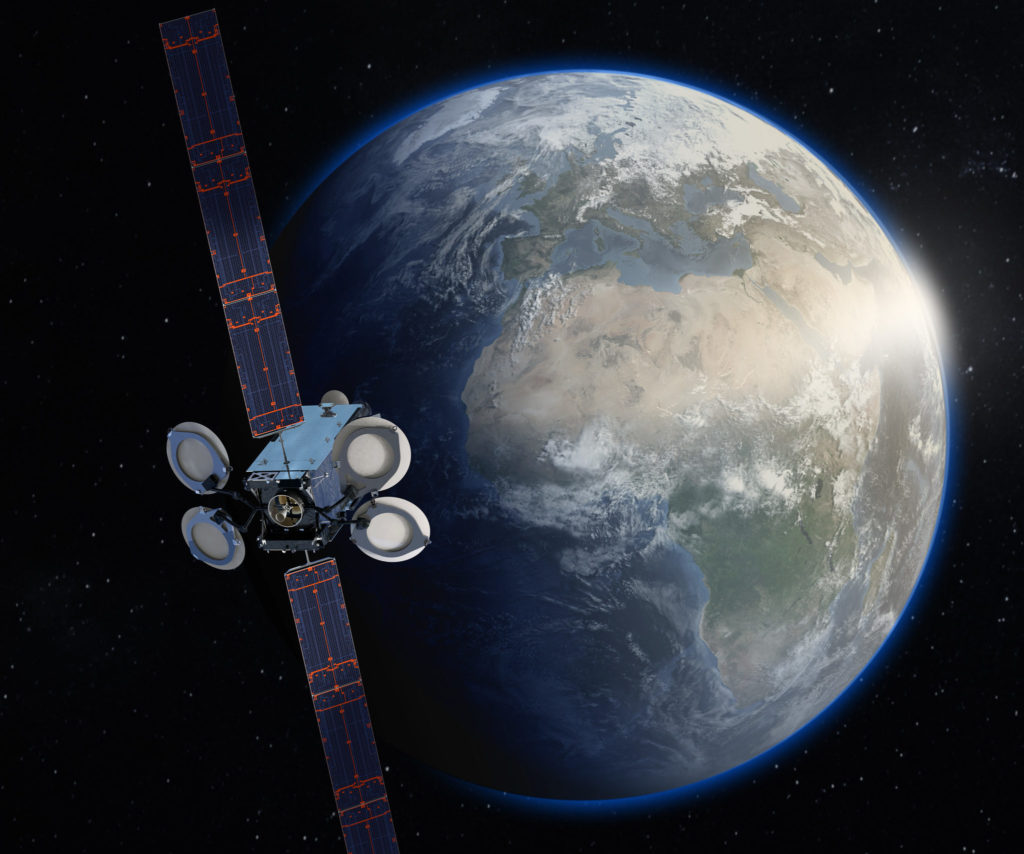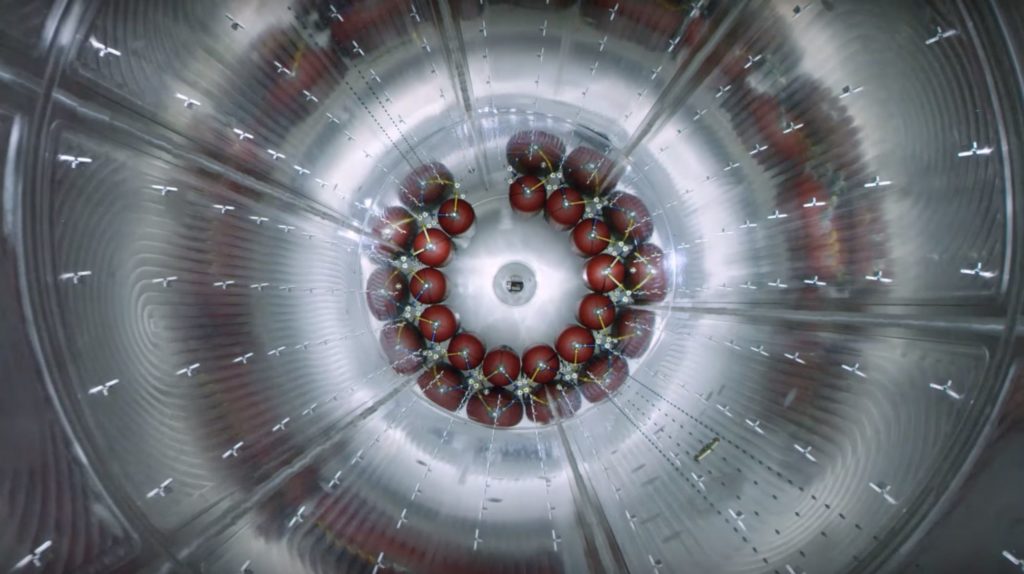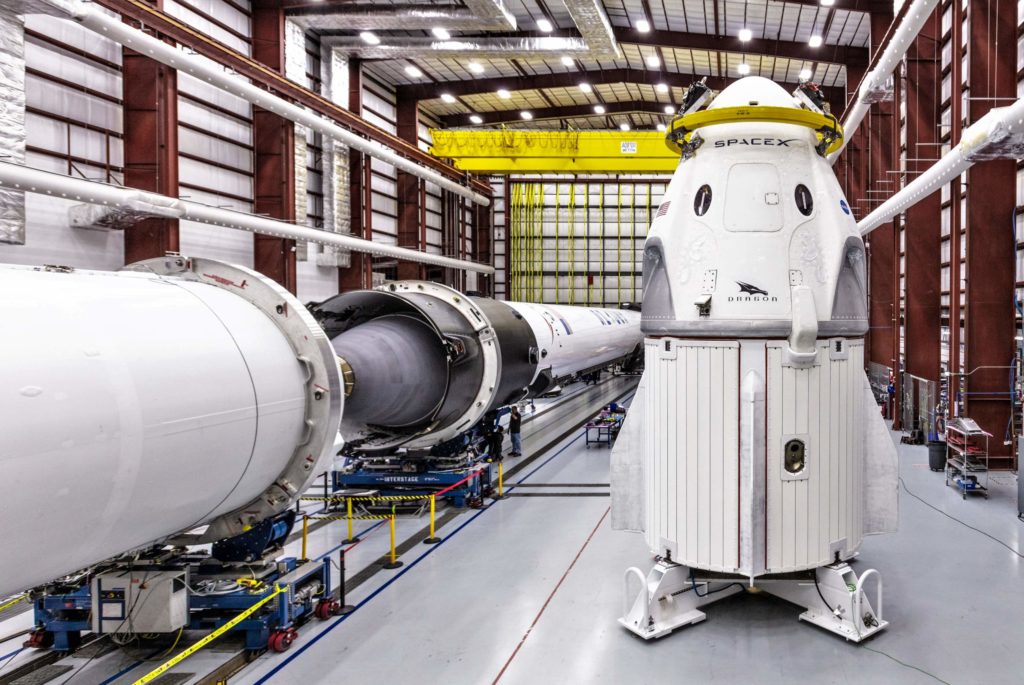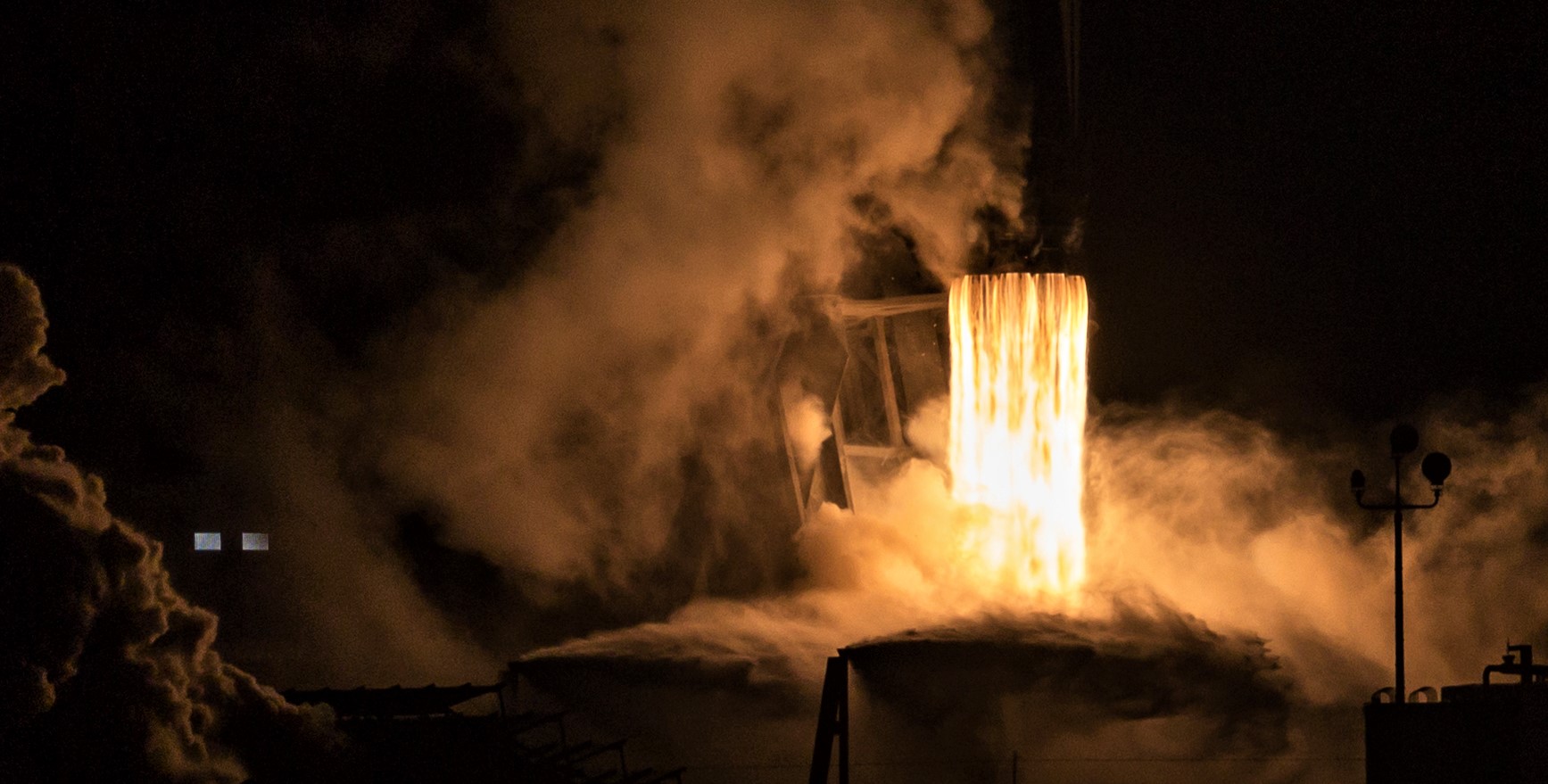
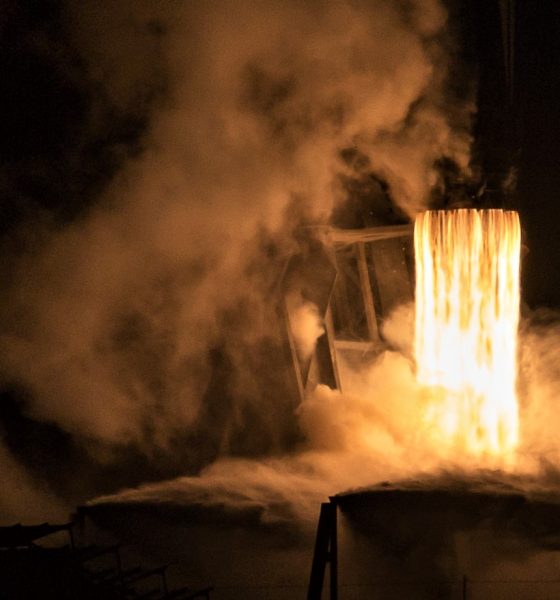
SpaceX
SpaceX to launch replacement satellite two years after fateful Falcon 9 failure
On September 1st, 2016, SpaceX’s Falcon 9 rocket suffered a catastrophic anomaly during a static fire test, causing an explosion that completely destroyed the vehicle, the launch pad, and Spacecom’s $200M Amos-6 satellite. This ultimately triggered a months-long investigation into what CEO Elon Musk described as “the most difficult and complex failure [SpaceX has] had in 14 years.”
More than two years and 41 successful consecutive launches later, SpaceX and Israeli satellite operator Spacecom are reportedly aiming to launch Amos-6’s replacement – Amos-17 – as early as the end of May, around three months from now.
Business in Brief: Spacecom says it will launch Amos 17 satellite within four months https://t.co/nkIFd7DzHJ
— Haaretz.com (@haaretzcom) February 25, 2019
Nearly two and a half years distant, the reverberations of SpaceX’s Amos-6 Falcon 9 failure continue to reverberate loudly. Aside from demanding changes to the operational procedures used to launch Falcon 9 and forcing an extensive critical analysis of design, production, and qualification methods, SpaceX has spent countless resources pursuing an extensive redesign of the component pointed at as the primary source of the explosion that destroyed Falcon 9. Known as composite overwrapped pressure vessels (COPVs), SpaceX uses the bottles to store extremely high-pressure helium (5000+ psi, 340+ bar) to pressurize Falcon 9’s RP-1 and oxygen tanks, as well as nitrogen to power its cold-gas maneuvering thrusters.
According to a failure analysis performed by SpaceX with NASA, the USAF, the NTSB, and the FAA, it was concluded that the cause could be traced back to a complex series of events centered around those helium COPVs. Meant to be the first mission to utilize subcooled propellant and oxidizer, the extreme cold in the upper stage LOx tank caused solid oxygen to form on the outside of the COPVs located inside it. While complex, the gist was that liquid (and perhaps solid) oxygen could have formed around the outside of the COPV, potentially finding its way in between the carbon fiber wrappings, creating a buckle in the fibers, and ultimately causing fibers to break. Near the end of this process, those breaking fibers could have created a spark or breached the helium tank, instantaneously overpressurizing the upper stage and causing an explosion.
NASA’s Aerospace Safety Advisory Panel (ASAP) and NASA itself have aired concerns about those COPVs since 2016, triggering an extraordinarily comprehensive program of testing, characterization, and redesign of the COPVs SpaceX uses. They have now successfully flown on 3-4 Falcon 9 launches under the same expedited propellant loading conditions that an identical rocket will undergo in preparation for Crew Dragon launches. CEO Elon Musk spent several minutes discussing the redesigned COPVs in a May 2018 press conference and did not mince words when he described them as “by far the most advanced pressure vessel[s] ever developed by humanity.”
“The amount of testing and research that’s gone into COPV safety is gigantic. This is by far the most advanced pressure vessel ever developed by humanity. It’s nuts. And I’ve personally gone over the test design, I’ve lost count how many times. But the top engineering minds at SpaceX have agonized over this. We’ve tested the living daylights out of it. We’ve been in deep, deep discussions with NASA about this. And I think we’re in a good situation.” – SpaceX CEO Elon Musk, May 2018
NASA and ASAP concerns have since been alleviated, culminating on February 22nd with an official announcement that NASA was ready for SpaceX to conduct the first uncrewed launch of its Crew Dragon spacecraft on March 2nd. It’s thus almost poetic that customer Spacecom chose the same week to announce a target date for the Falcon 9 launch of a satellite built to replace the destroyed Amos-6, known as Amos-17. Soon after the Amos-6 disaster, Spacecom settled on a free SpaceX launch contract for a future satellite instead of an immediate $50M payout. Procured for around $160M, SpaceX is reportedly targeting the launch of the Boeing-built satellite during the week of May 27th, likely from Launch Complex 40 (LC-40) – the same pad that suffered extensive damage during the September 2016 anomaly.
- Spacecom’s Boeing-built Amos-17 satellite. (Boeing)
- Falcon 9 shows off some of its COPVs in a tour of SpaceX’s Hawthorne factory. (SpaceX)
- An impressive view of Crew Dragon (DM-1), Falcon 9 B1051, and its upper stage. (SpaceX)
Since Amos-6, SpaceX’s record of reliability has been effectively spotless and now stands at an impressive 41 consecutive successful launches, including Falcon Heavy’s February 2018 debut. Aside from the sheer volume of launches SpaceX performed in a little over two years, the company has pushed full speed ahead towards its goal of routinely reusing Falcon 9 boosters. Less than 24 months after the first commercial reuse, SpaceX has landed Falcon 9 boosters 34 times and reused them 20 times, numbers that are only likely to grow in 2019.
Set to occur shortly after the planned launch debuts of Crew Dragon and Falcon Heavy (commercially), SpaceX will hopefully be able to place Amos-17 in a healthy orbit and thus effectively retire the Amos-6 saga before the second half of 2019.
Check out Teslarati’s newsletters for prompt updates, on-the-ground perspectives, and unique glimpses of SpaceX’s rocket launch and recovery processes!

Elon Musk
Elon Musk’s Biggest Revelations on AI, Robots, and the Future of Work from the Moonshots Podcast

Elon Musk’s appearance on the Moonshots with Peter Diamandis podcast was packed with bold predictions, candid admissions, and surprising tech insights. The nearly three-hour conversation covered everything from artificial intelligence to humanoid robots, geopolitics, and the future of work. Here are the top 10 most intriguing takeaways:
-
Aggressive AGI Timeline Predictions
Musk offered a detailed view on when artificial general intelligence (AGI) could emerge, suggesting it may arrive sooner than many expect, emphasizing both transformative potential and risks.
-
U.S. vs. China in the AI Race
He discussed the strategic competition between the United States and China over AI development, noting that geopolitical dynamics will shape how and who leads in the next decades.
-
Future of Job Markets
Musk touched on how AI and automation could reshape employment, predicting massive boosts in productivity alongside potential disruptions in traditional work structures.
-
Clean Energy Transition
A recurring theme was the role of clean energy in future economies, with Musk reiterating the importance of scaling sustainable power generation and storage.
-
Humanoid Robots Are Coming
On the podcast, Musk elaborated on Tesla’s work on humanoid robots, hinting at timelines and applications that go beyond factories to general-purpose assistance.
-
Tesla Roadster “Last Human-Driven Car”
Outside the core discussion topics, Musk teased features of the upcoming Tesla Roadster — calling it “the best of the last of the human-driven cars” and suggesting safety won’t be its main selling point.
-
The Role of AI in Clean Energy and Robotics
Linking AI to both energy optimization and robotics, Musk explained how smarter systems could accelerate decarbonization and task automation across industries.
-
U.S. Innovation Leadership
Musk argued that maintaining American leadership in key tech sectors like AI, space, and robotics should be a national priority, with thoughtful policy and investment.
-
Job Creation vs. Job Elimination
While acknowledging automation’s disruptive effects, he also outlined scenarios where new industries and opportunities could emerge, particularly in AI, space, and advanced manufacturing.
-
Long-Term Vision for Humanity
Throughout the conversation, Musk revisited his long-term philosophical views — including a belief in humanity’s responsibility to become a multi-planetary and technologically empowered species.
Whether you agree with Musk’s optimism or not, the podcast offers a window into the thinking of one of the most influential figures in tech today, in and why his visions continue to spark debate and inspiration.
Elon Musk
Starlink achieves major milestones in 2025 progress report
Starlink wrapped up 2025 with impressive growth, adding more than 4.6 million new active customers and expanding service to 35 additional countries, territories, and markets.

Starlink wrapped up 2025 with impressive growth, adding more than 4.6 million new active customers and expanding service to 35 additional countries, territories, and markets. The company also completed deployment of its first-generation Direct to Cell constellation, launching over 650 satellites in just 18 months to enable cellular connectivity.
SpaceX highlighted Starlink’s impressive 2025 progress in an extensive report.
Key achievements from Starlink’s 2025 Progress
Starlink connected over 4.6 million new customers with high-speed internet while bringing service to 35 more regions worldwide in 2025. Starlink is now connecting 9.2 million people worldwide. The service achieved this just weeks after hitting its 8 million customer milestone.
Starlink is now available in 155 markets, including areas that are unreachable by traditional ISPs. As per SpaceX, Starlink has also provided over 21 million airline passengers and 20 million cruise passengers with reliable high-speed internet connectivity during their travels.
Starlink Direct to Cell
Starlink’s Direct to Cell constellation, more than 650 satellites strong, has already connected over 12 million people at least once, marking a breakthrough in global mobile coverage.
Starlink Direct to Cell is currently rolled out to 22 countries and 6 continents, with over 6 million monthly customers. Starlink Direct to Cell also has 27 MNO partners to date.
“This year, SpaceX completed deployment of the first generation of the Starlink Direct to Cell constellation, with more than 650 satellites launched to low-Earth orbit in just 18 months. Starlink Direct to Cell has connected more than 12 million people, and counting, at least once, providing life-saving connectivity when people need it most,” SpaceX wrote.
Elon Musk
Starlink passes 9 million active customers just weeks after hitting 8 million
The milestone highlights the accelerating growth of Starlink, which has now been adding over 20,000 new users per day.

SpaceX’s Starlink satellite internet service has continued its rapid global expansion, surpassing 9 million active customers just weeks after crossing the 8 million mark.
The milestone highlights the accelerating growth of Starlink, which has now been adding over 20,000 new users per day.
9 million customers
In a post on X, SpaceX stated that Starlink now serves over 9 million active users across 155 countries, territories, and markets. The company reached 8 million customers in early November, meaning it added roughly 1 million subscribers in under seven weeks, or about 21,275 new users on average per day.
“Starlink is connecting more than 9M active customers with high-speed internet across 155 countries, territories, and many other markets,” Starlink wrote in a post on its official X account. SpaceX President Gwynne Shotwell also celebrated the milestone on X. “A huge thank you to all of our customers and congrats to the Starlink team for such an incredible product,” she wrote.
That growth rate reflects both rising demand for broadband in underserved regions and Starlink’s expanding satellite constellation, which now includes more than 9,000 low-Earth-orbit satellites designed to deliver high-speed, low-latency internet worldwide.
Starlink’s momentum
Starlink’s momentum has been building up. SpaceX reported 4.6 million Starlink customers in December 2024, followed by 7 million by August 2025, and 8 million customers in November. Independent data also suggests Starlink usage is rising sharply, with Cloudflare reporting that global web traffic from Starlink users more than doubled in 2025, as noted in an Insider report.
Starlink’s momentum is increasingly tied to SpaceX’s broader financial outlook. Elon Musk has said the satellite network is “by far” the company’s largest revenue driver, and reports suggest SpaceX may be positioning itself for an initial public offering as soon as next year, with valuations estimated as high as $1.5 trillion. Musk has also suggested in the past that Starlink could have its own IPO in the future.
